By REYANNE LOUISSE AMPONG AND CARLITO TOPACIO
THE PHILIPPINES has emerged as a frontrunner of Asian artistry in recent years. Producing a multitude of well-renowned artisans and the most stunning of artworks, one exhibit dares to contain this eclectic melting pot of aesthetics and culture that this fair nation has become. ManilArt celebrates its 9th year of opening, showcasing a variety of sculptures, paintings, and portraits from seasoned masters to upcoming new talents.
Together with the National Commission for Culture and the Arts, local and international art galleries and museums came together at the SMX Convention Center in Taguig City last October 12 to 15, displaying the best masterpieces they had to offer.

Playing off the theme of a staple street game, Roberto Lolong’s Bata Ka Pa Nga portrays the dodgeball game known to childhood life. The young boy was hit from the back by an exaggeratedly large ball. This partnered by the boy’s small frame and his posture which implies that he was caught off guard, depicts how strong of an impact growing pains have on a child. The ball represents the tribulations often hurled at the innocent youth. The vibrant colors of the ball and the red acrylic splatters contrasted with the kid’s grayscale color scheme highlights the artwork’s central theme—that what truly sticks out to an individual are the unpleasant events that occurred to him during his formative years, for they are the very things which mold people into becoming the adults that they are today.

Another Lolong painting is Hiding the Truth which paints a picture of how deception ultimately falters. Representing white lies, the blots of white splattered across the painting are minute and bland in nature which provides a foil for the polychromatic background of the piece. The swirls of colors form a pattern that is comparable to a fingerprint symbolizing how the truth always leaves its marks ready to be uncovered. The artist made use of differences in both the hue and the size of his two subjects in order to further push his ideologies, showing that the lustrous nature of truth can never be truly dulled by the lies plastered on top of it.
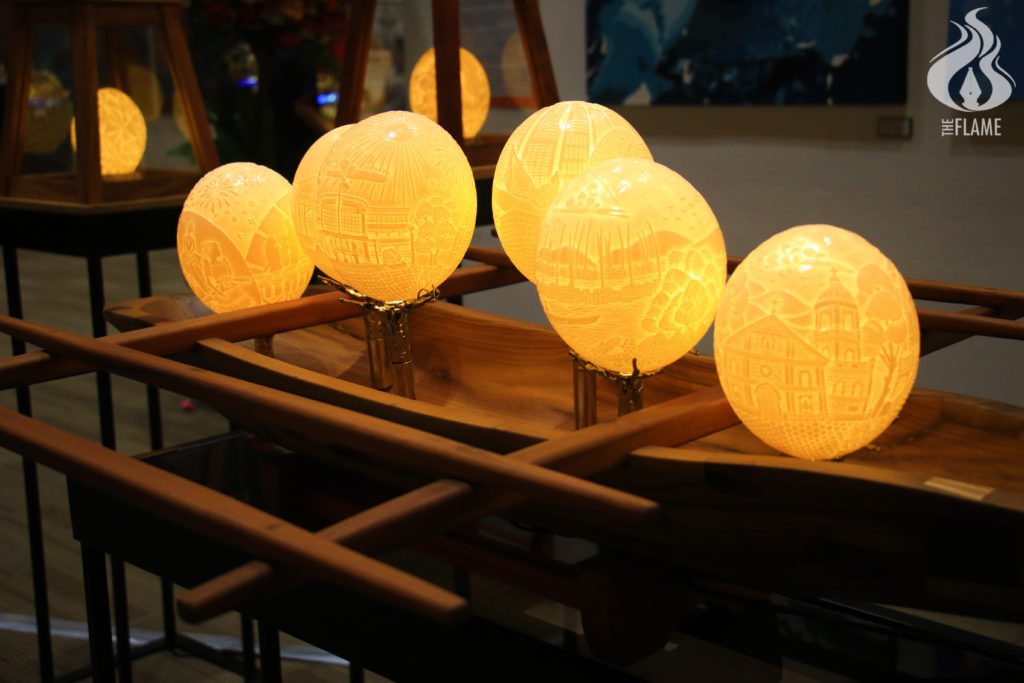
Danny Rayos Del Sol perched on top of a fishing boat carved ostrich eggs which illustrate the scenery of his sculpture Taguig. Wanting to capture the essence of what his hometown was like back in his childhood days, he utilized eggs because of their correlation to youth and birth. The sculpture showcases carvings of the landmarks that he has come to know as a child as well as the modern buildings that have been erected throughout the years. They are nestled within a boat in order to show that Taguig is not a stagnant city. While it does hold its culture and past to heart, it is willing to ride the waves of modernization becoming the metropolitan giant that it is today.
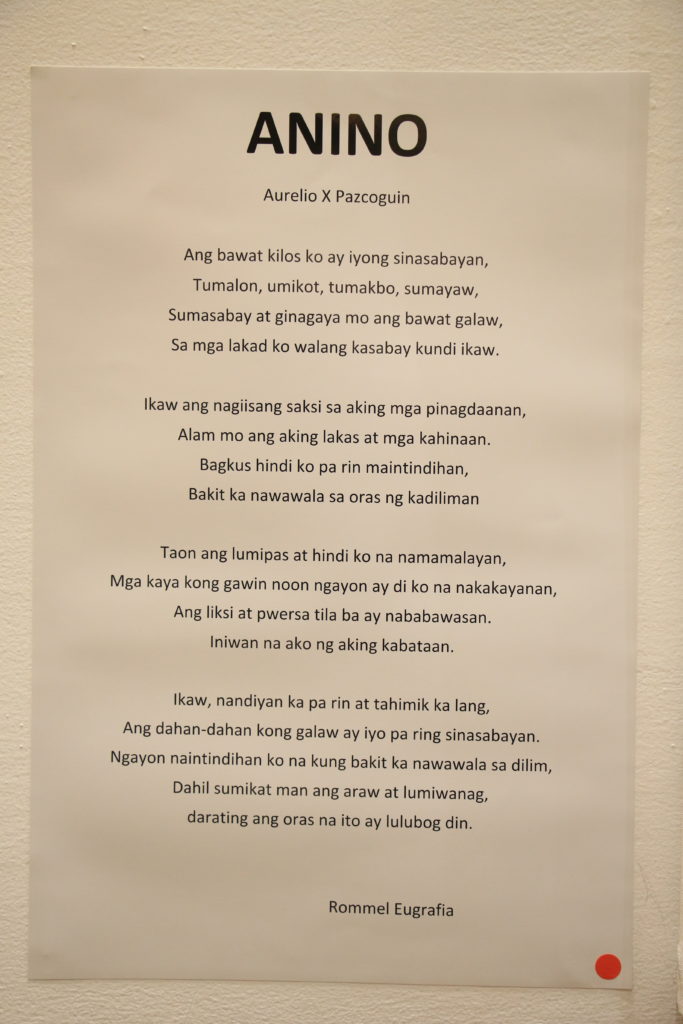
Melding literature and visual arts together, the shadowy figure on the left is aptly named Anino, a painting by Rommel Eugrafia. The painting was partnered with Aurelio Pazcoguin’s poem which also shares same title. The man in the picture is enveloped in black puffs of smoke with his face painted over by strokes of white, losing any definitive facial features. Both pieces portray how in the moment of darkness, one loses himself turning into a ghastly creature as exhibited by the man’s grim demeanor. This tells us how we tend to break down and lose our true selves during the darkest of moments.
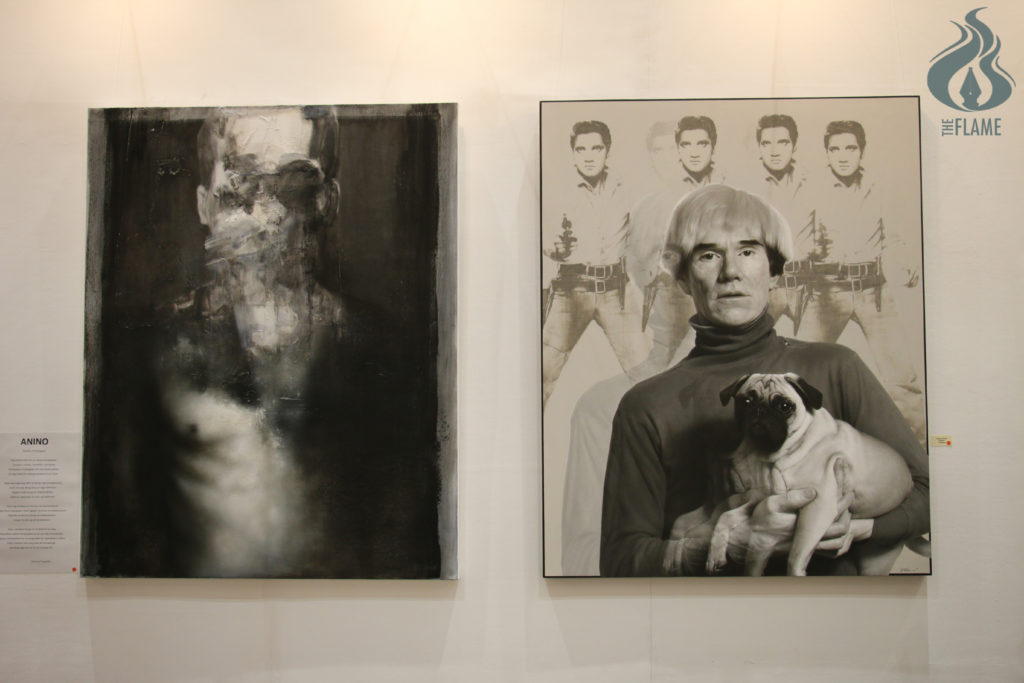
Pongbayog’s kings, pop, and Repeat is a tongue-in-cheek piece which pokes fun at art and exploits the reputation of eminent people as their primary selling point. As seen in the portrait, cropped out images of Andy Warhol and Elvis Presley are hastily put on the canvas with little to no effort. Some of which are even faded in order to insinuate the lack of quality and general laziness of the artworks that this piece satirizes. The artist even employed the title as an element to his piece, intentionally making mistakes in spacing and capitalization in order to demonstrate the lack of craftsmanship that these types of works harbor.
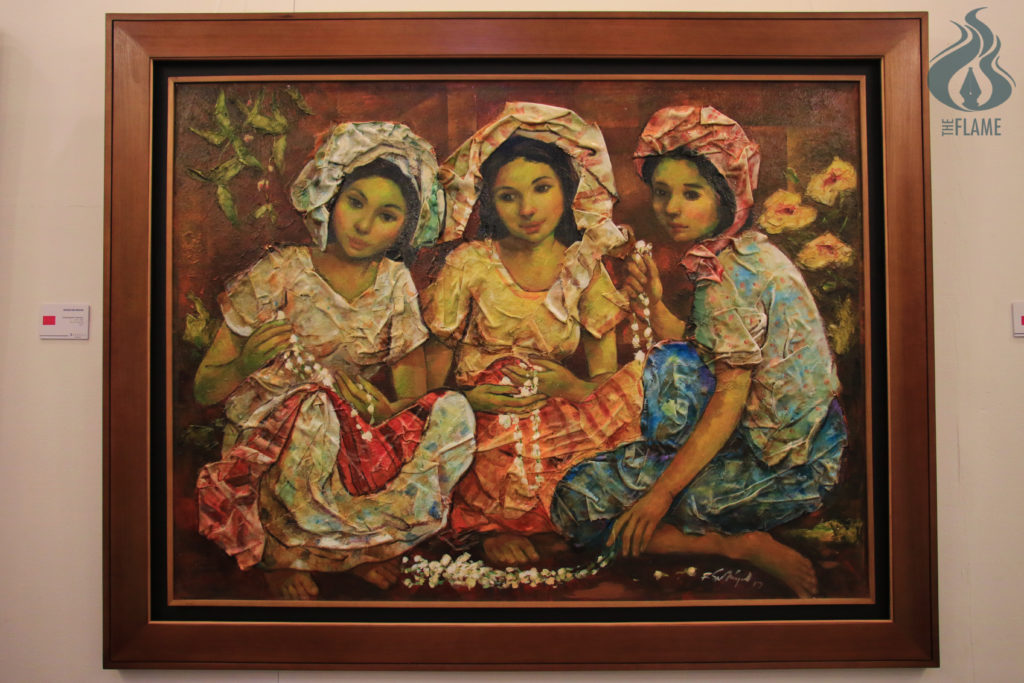
Roger San Miguel offers a walk in Filipino customs and tradition. In his collection of new works, he incorporated cubism with his classic subjects—mother and child, tropical life, scenes from the market, etc. Sampaguita Vendors is one of the easily noticed among his paintings. It is a triad of young girls, looking serene whilst doing their work. Just like Sampaguita which is sweet, the vendors look delicate and peaceful which knocks on Filipinos’ souls. The color palette of warm and cool tones is suggestive of the simple yet bountiful life and practices of Filipinos which are slowly eroding at this time. This is what the painter wants to preserve, as well as the tradition of cubism.
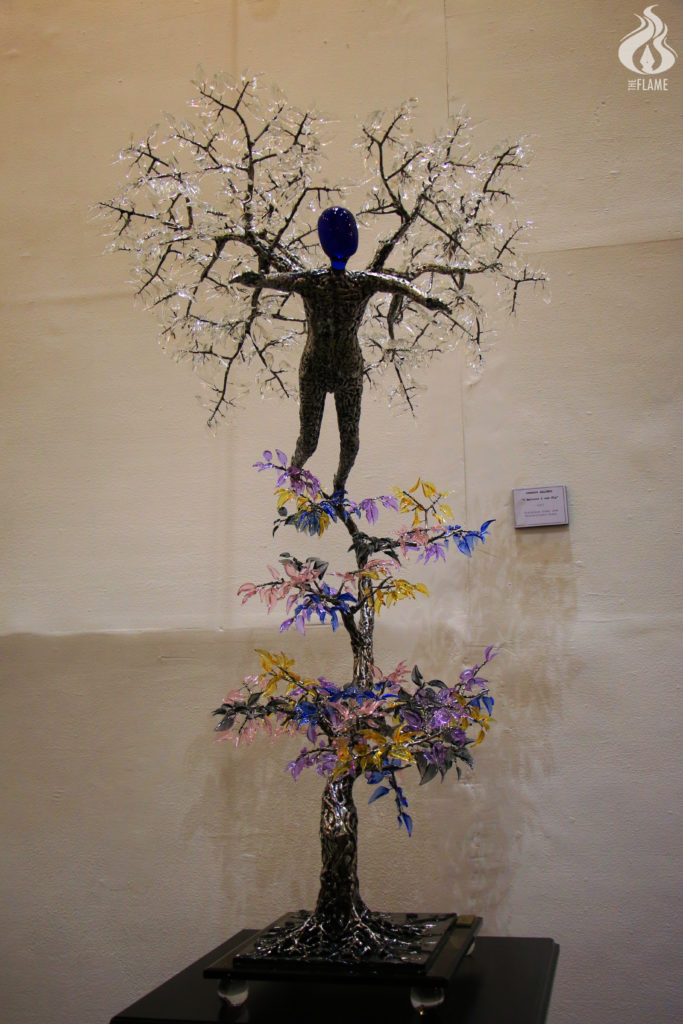
I Believe I Can Fly is a magnificent work by sculptor Jinggoy Salcedo. The sculpture is made of steel and borosilicate glass, the medium Salcedo is familiar with because of their family business. The combination of steel and glasswork presents a unique way of doing art. I Believe I can Fly presents the idea of being unique or distinct by aiming for high and the best. The human figure is tilting upwards, the branches of leaves behind him are wings which will guide him in the adventure he is about to experience as he goes up. The sculpture has a recurring theme of nature—leaves and trees—and how people should look for what is best for them.
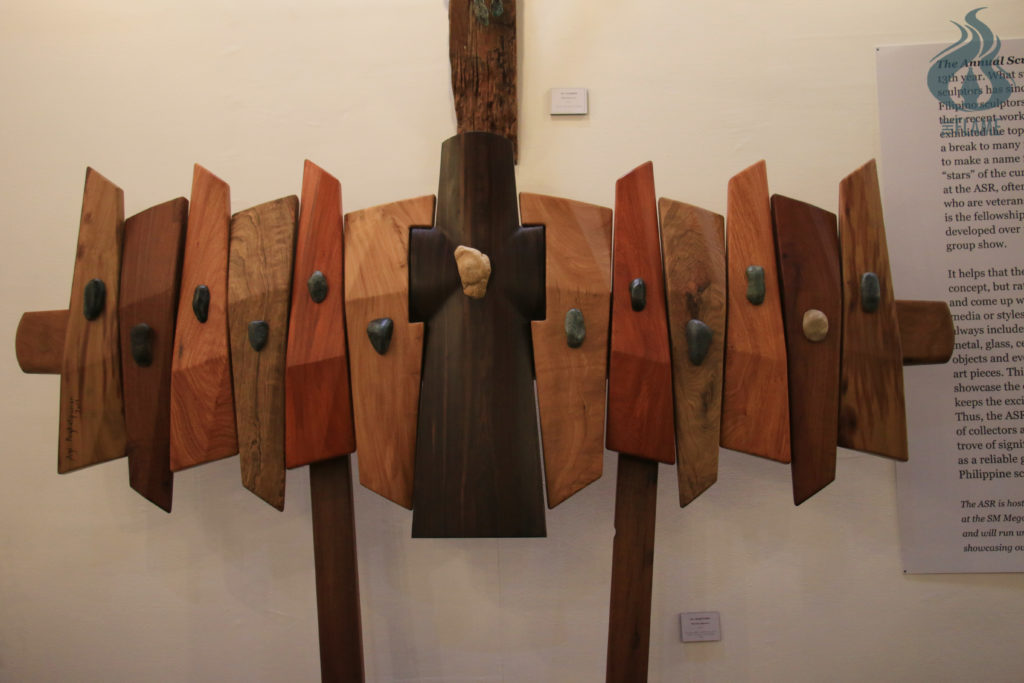
Sculptors are given freedom to express themselves and explore the atypical using only the materials available to them. The exhibition includes a wide range of materials including wood, metal, glass, wire, and paper. Huling Hapunan is Agi Pagkatipunan’s take on telling the story of The Last Supper. The simple yet interesting sculpture is made of different types of wood such as Molave and Yakal. Giving distinctions amongst the cuts of wood are river stones which represent the people present in the supper. In the center is a cross, representing Jesus while the six woodcuts on each side represent his followers who joined him in that gathering.
Visitors surely witnessed and appreciated the rich diversity of Filipino culture through the artworks exhibited at the art fair. It is important to connect and be aware how culture bridges people and the 35 art galleries which joined this year’s ManilArt were able to do so. Visitors will go home with new knowledge and appreciation of the richness of the Philippines in terms of culture and the arts, as well as the foreign influences which shaped the country to become who she is now. F



